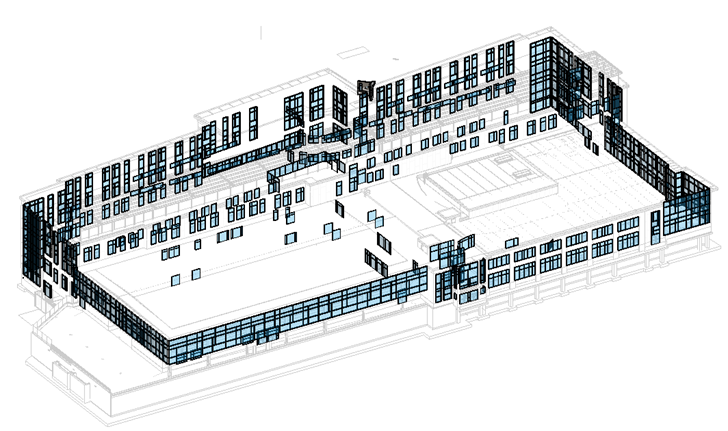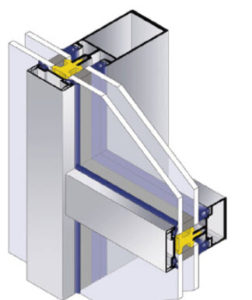Shop Drawings in BIM are now Possible

BIM methodology not only redefines how buildings are designed, but it also transforms how their components are planned and manufactured. In complex systems such as curtain walls or storefronts, integrating shop drawings directly from the BIM model was traditionally not feasible without compromising a critical factor in our field: precision. However, making this transition became essential in order to align with today’s construction industry standards and to work with greater speed, consistency, and accuracy at every stage of a project.
“In the past, the process often involved modeling in one platform and documenting in another. This led to rework, delays, and potential inconsistencies.”
Today, thanks to integrated digital workflows, it’s possible to consolidate all phases within a single ecosystem, from receiving architectural drawings to delivering final shop drawing documentation.
The result?
- Efficient process
- Fewer errors
- Shorter delivery times
- Improved coordination between design, engineering, and execution.

From CAD to BIM environments: a paradigm shift
Transitioning from 2D drafting in CAD tools to 3D modeling within BIM environments was not just a technological evolution: it fundamentally changed the way we approach projects. Previously, producing shop drawings meant redrawing geometry, manually adjusting dimensions, and repeating tasks every time the design or site conditions changed. Now, everything is linked to a single model, where any modification is automatically reflected in the documentation.
However, the shift wasn’t straightforward. Unlike other disciplines where BIM adoption was more seamless, our field faced a key challenge: precision.
“Metal systems, such as those used in curtain walls or storefronts, demand tolerances as tight as 1/32″, far more stringent than in many other specialties.”
While BIM tools allowed us to model with this level of precision, exporting to PDF did not initially preserve that standard. As a result, we had to transfer documentation back to CAD to print correctly, introducing unnecessary steps and risks to the process.
Moreover, most source information still arrived in CAD format, requiring constant import/export between platforms. This led to a hybrid workflow model — modeling in BIM but documenting in CAD—that responded to growing demands without fully solving the core problem.
Fortunately, these tools have evolved. Today, they support exporting PDFs with the required precision, validating the efforts we’ve made to adapt our processes. This enables us to deliver shop drawings that are fabrication-ready, without additional adjustments, and with better coordination between teams.

Cross-disciplinary coordination: a strategic advantage
In projects with complex building envelopes, success depends heavily on the coordination between architecture, structural design, engineering, and the fabrication of the final product.
By modeling façade systems directly within the BIM environment, we align geometries, fastenings, and construction details with the rest of the building. This helps avoid clashes, anticipate solutions, and validate the entire system before it reaches the job site.
When the model is properly structured, it becomes a reliable source of information for all stakeholders. And when shop drawings are generated from that same model, project traceability and consistency are further reinforced.
Conclusion
Integrating BIM and shop drawings is not just a technical upgrade; it represents a new way of working:
- More unified
- More agile
- More reliable
In an industry where time, precision, and coordination are key, this synergy offers a real competitive advantage.

Need help with a project?
Request a quote today
Contact our experts, and we’ll give you personalized assistance.
Our services are just one message away.
